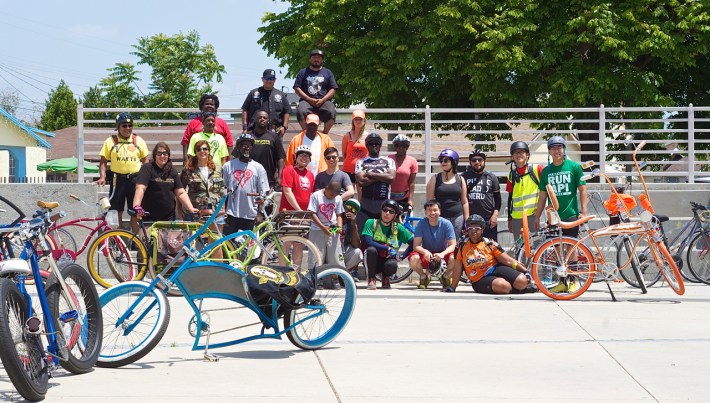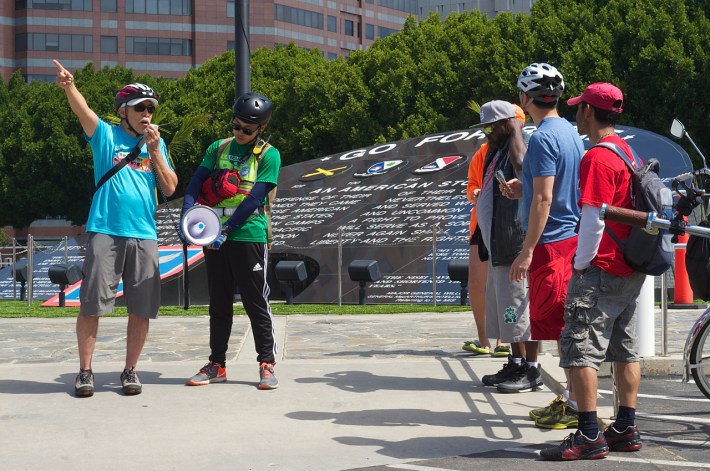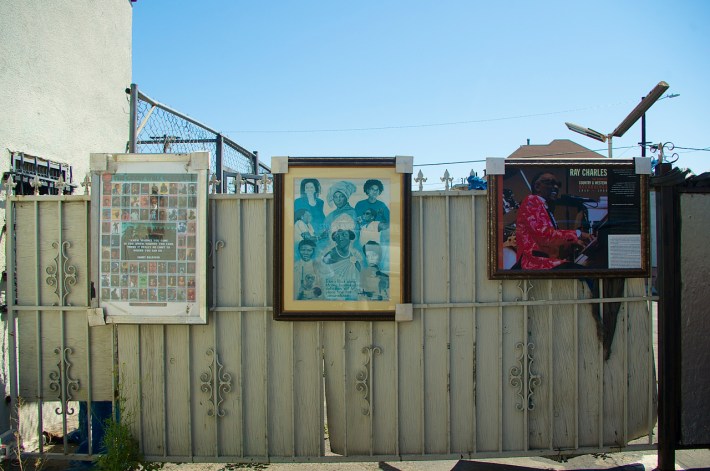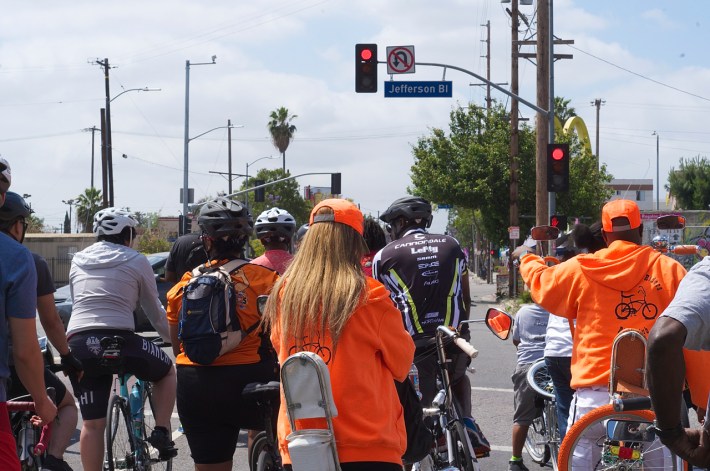
The unity bike ride - the third annual effort between the East Side Riders Bike Club and the Asian and Pacific Islander Obesity Prevention Alliance (APIOPA) to link the communities that lie along the historic Central Avenue corridor by unearthing their shared history - kicked off yesterday's event with a discussion of the origins of Little Tokyo.
Starting at the Japanese American National Museum at 1st and Central, Steve Nagano, a former teacher and participant in the Digital Histories project, spoke about the 30,000 Japanese and Japanese-American residents who had lived in the area prior to their internment during World War II. Rounding up the residents of one marginalized group, he explained, had only made way for others. African Americans, Latinos, and Native Americans moved into the area, drawn by the prospect of jobs in the war industries and constrained by the history of redlining that had made it nearly impossible for non-whites to live west of Central Avenue.
There were stories passed down through the generations, Nagano said, of African-Americans helping take care of Japanese property during the war and even possibly hiding a few Japanese who wished to avoid internment. But the arrival of the newcomers also left its mark—the area was renamed Bronzeville and the population grew so large and the residences so overcrowded that conditions deteriorated rather rapidly. With the Zoot Suit Riots of 1943 no doubt adding fuel to perceptions that it was dangerous to have so many so-called "subversive" residents living in such close quarters, many of the area's buildings were condemned, and at least fifty African-American families were moved to Jordan Downs in Watts (housing that had served as barracks for white workers in the early part of the war). Once those residents were gone, white landlords were reluctant to rent to other folks of color, including some of the Japanese by then returning from internment.

This look at interwoven histories comes at a moment in which it is becoming increasingly clear just how vulnerable early discriminatory planning practices have left lower-income communities of color all along Central Avenue, as well as to the east, in Boyle Heights.
As Nagano noted, housing is springing up left and right all around Little Tokyo, but very little of it is affordable. And existing senior housing for elderly Japanese (just across the river) is currently under threat. Older and lower-income residents fear that without a conscious effort to preserve space for those in need, the opening of the regional connector hub and more luxury housing will result not only in the physical displacement of those on the margins but an erasure of the area's history as well. While much of the public art in the area, including some of the murals, testifies to some of the community's important history, it is not as meaningful without the presence of the people whose stories it tells.
Heading south along Central to Watts, it is clear residents are struggling with some of the same issues.

On one hand, stakeholders are currently grappling with how to balance preserving the area's history as a key black cultural and business corridor with the mobility needs of the majority Latino population that lives near, works along, and relies on accessing the corridor now. [Read about the struggle over the Central Avenue bike lane here, here, here, here.] On the other hand, it is unclear whether the more vulnerable residents—black or brown—will be able to avoid displacement should the $1 billion high-rise hotel and residential apartment complex at the Reef (just east of Central) spur the kind of transformation many in the community fear it may. The conversion of the historic Dunbar Hotel into affordable and senior housing is one of several more recent affordable housing projects in the area, but, as in Little Tokyo, it isn't nearly enough to meet demand.
The idea that the very folks who breathed life into the neighborhoods they were once confined to might someday not have a place there is deeply disheartening. So is the extent to which they have tended to be left out of discussions about the future of the area or of what they would need to see in order to feel like they had successfully reclaimed their streets.
Too often, when planners think about reclaiming streets for people, they are referring to actual physical space: a bulb-out, a bike lane, a parklet. But when folks that have been deliberately marginalized talk about reclaiming streets, they tend to be speaking about creating safe and welcoming spaces for themselves, their identities, their histories, their cultures, and their communities. It's a different way to think about cities, space, and what it means to build or be part of a community. But it's a much more inclusive one. And the expansion of networks within the non-mainstream bike community - yesterday's participants hailed from Detroit, Pomona, Simi Valley, and all over South L.A. - lends credence to the notion that it is a growing conversation, too.







